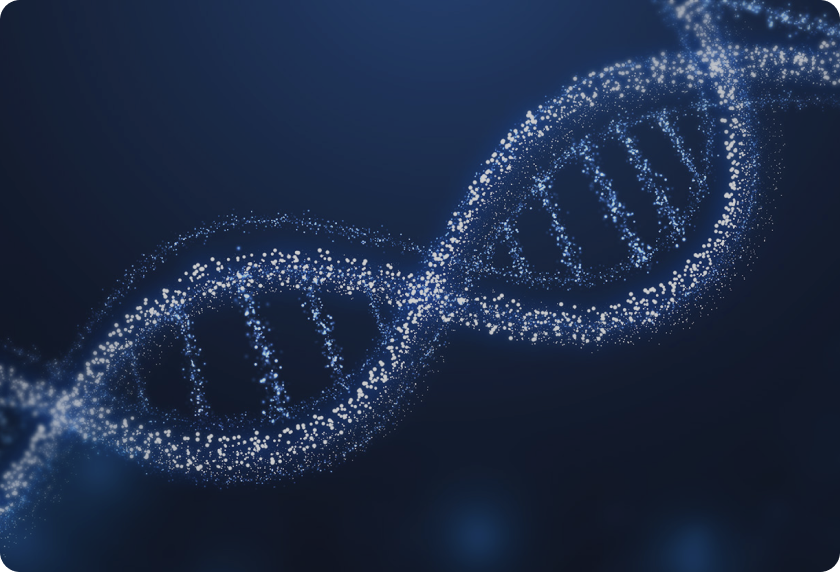How NAD Can Support Children on the Autism Spectrum: Strategies and Success Stories
Autism is a developmental disorder that affects communication and behavior.
According to the Centers for Disease Control and Prevention (CDC), autism affects an estimated 1 in 36 children in the United States1, making it more common than previously thought.
The disorder can manifest in various ways, from mild social challenges to significant communication difficulties and repetitive behaviors.
What’s striking about autism is its indiscriminate nature. It knows no boundaries of wealth, fame, or social status.
Families from all walks of life, including public figures like Elon Musk, Sylvester Stallone, Holly Robinson Peete, Amanda Seyfried, Dylan Dreyer, and Nicole Shanahan, can find themselves navigating the challenges of raising a child with autism.
In this article, we explore…
- Groundbreaking strategies that can help improve the lives of children with autism.
- How NAD support might be a game-changer in the treatment and support of autism spectrum disorder.
- A transformative case study of Corbin, a 3-year-old whose behavior, engagement, and communication skills have dramatically improved after NAD treatment.
Autism Intervention
One of the key issues in the autism community is the need for early detection and intervention.
Research shows that early diagnosis and intervention can significantly improve outcomes for individuals with autism.
However, many families face barriers to timely diagnosis and intervention services, highlighting the importance of raising awareness and ensuring that all children have access to quality care.
Another challenge faced by families affected by autism is the stigma and misconceptions surrounding the disorder.
Many people still hold outdated beliefs about autism, leading to discrimination and social isolation for individuals with autism and their families.
As the exact causes of autism remain not fully understood, research indicates that a combination of genetic and environmental factors contribute to its development.
One emerging area of research focuses on the role of NAD (nicotinamide adenine dinucleotide) deficiency in autism phenotypes2.
Autism and NAD

NAD is a coenzyme found in all living cells and plays a crucial role in various cellular processes3, including energy production, DNA repair, and gene expression.
Our research here in Jinfiniti has shown that individuals with autism may have lower levels of NAD compared to neurotypical individuals.
This deficiency could potentially impact mitochondrial function, oxidative stress levels, and neurotransmitter signaling, all of which are involved in the development of autism.
Furthermore, NAD deficiency may also affect other cellular processes, such as immune function and inflammation, which have been linked to autism.
Jinfiniti’s Advocacy on Autism

At Jinfiniti, our mission is to provide innovative treatment for children with autism using NAD.
In fact, we have exciting updates from our ongoing study, showing promising results.
For example, Corbin, a 3-year-old diagnosed with Autism Spectrum Disorder (ASD) following routine childhood vaccinations, has shown remarkable improvement after participating in testing protocols and using the Vitality formulation.
Here are some of the notable improvements observed in Corbin:
- Increased focus and engagement: Corbin has been able to sit attentively during therapy sessions and activities and with his teacher during meal times.
- Improved fine motor skills: He has demonstrated the ability to put individual popsicle sticks inside a toothbrush holder, indicating progress in his fine motor abilities.
- Enhanced communication skills: Despite being non-speaking, Corbin has shown progress in communication by interrupting his teacher to get her attention and indicating his wants and needs more clearly.
- Increased independence: Corbin has started opening his lunch snack containers and lunch boxes, showing improved independence in daily tasks.
- Improved responsiveness: He now responds with “yeah” when asked if he wants something, indicating better understanding and communication.
- Better understanding of verbal commands: Corbin can now follow verbal commands like putting his shoes on, demonstrating improved listening skills.
- Increased affection and social engagement: He has been more affectionate and cuddly, initiating play more often with his parents and seeking approval through eye contact.
- Expanded vocabulary: Corbin has started saying new words and phrases like “Peek-a-boo,” “I wake up,” and “I pee-pee,” showing progress in his language development.
- Improved behavior in public settings: He displayed patience and waiting behavior at the splash pad, a notable improvement from previous behaviors of attempting to run away.
Corbin’s improvements show that the Vitality formulation could be really helpful for kids with autism.
4 Ways Vitality ↑® NAD+ Booster Can Support Children With Autism

Vitality ↑® NAD+ Booster is a clinically tested blend of NAD precursor, Creatine monohydrate, D-Ribose, and Nicotinamide that work together to boost NAD levels, rejuvenating cells and the body.
This formulation is particularly beneficial for children with autism, helping improve their behavior and cognitive function in four key ways.
Supports Mitochondrial Function
Mitochondria are often called the “powerhouses” of cells because they produce most of the cell’s adenosine triphosphate (ATP), a molecule that stores and transports energy within cells.
NAD (nicotinamide adenine dinucleotide) is a coenzyme that plays a critical role in mitochondrial function4 by shuttling electrons in the electron transport chain, a process that generates ATP.
Research suggests a potential link between mitochondrial dysfunction and autism spectrum disorder (ASD).
Mitochondrial dysfunction can lead to reduced ATP production, affecting cellular processes crucial for brain development and function5. This dysfunction may contribute to the development or severity of ASD symptoms.
Boosting NAD levels could theoretically improve mitochondrial function by providing more of the coenzyme needed for efficient ATP production.
This could enhance cellular energy production and potentially support better brain function in individuals with ASD.
Manages Oxidative Stress
Oxidative stress occurs when there is an imbalance between free radicals and antioxidants in the body.
Free radicals are highly reactive molecules that can cause damage to cells and tissues if their levels are not controlled by antioxidants.
Research has shown that individuals with ASD may experience higher levels of oxidative stress6 compared to typically developing individuals.
A study published in the journal Clinical Biochemistry and Nutrition found that children with ASD had significantly higher levels of oxidative stress markers and lower levels of antioxidants compared to typically developing children7.
Another study published in the journal Redox Report suggested that oxidative stress may play a role in the development and progression of ASD.
By boosting NAD levels, it is believed that the body’s ability to manage oxidative stress may be enhanced.
This could potentially lead to improved overall health and cognitive function in individuals with ASD.
Supporting NAD levels through supplementation or other means may help mitigate the effects of oxidative stress and improve outcomes for individuals with autism.
Supports Neurotransmitter Signaling
Neurotransmitters are essential for communication between neurons in the brain.
Imbalances in neurotransmitter signaling have been associated with neurological disorders, including autism.8
For example, a study published in the journal Frontiers in Psychiatry found alterations in the levels of certain neurotransmitters, such as serotonin and dopamine, in individuals with autism spectrum disorder (ASD)9.
By boosting NAD levels, the brain’s ability to maintain proper neurotransmitter balance may be enhanced.
This could lead to improved communication between neurons and potentially enhance cognitive function and overall brain health in individuals with autism.
A study published in the journal Molecular Psychiatry suggested that NADH (a form of NAD) supplementation could modulate dopamine levels in the brain10, which is important for regulating mood and behavior.
Another study published in the Journal of Neuroscience Research found that NADH supplementation improved cognitive function in a mouse model of Alzheimer’s disease11, which is characterized by neurotransmitter imbalances.
The potential of NAD to restore balance in neurotransmitter signaling is crucial for individuals with autism, as disruptions in this balance can lead to cognitive and behavioral issues.
By supporting NAD levels, it may be possible to help restore this balance and improve communication between neurons, which could have positive effects on cognitive function in individuals with autism.
Supports Healthy Immune Function and Inflammation
Dysregulation of the immune system and chronic inflammation have been linked to various health conditions, including autism.12
For example, a study published in the Journal of Neuroinflammation found that children with autism had altered levels of certain immune markers compared to typically developing children13.
Another study published in the Journal of Neuroimmunology reported elevated levels of inflammatory markers in the brains of individuals with autism14.
By boosting NAD levels, it’s possible to modulate immune function and reduce inflammation. This could have several benefits for individuals with autism, including improved overall health and well-being.
One study published in the journal Nature Communications found that NAD supplementation reduced inflammation and oxidative stress in a mouse model of multiple sclerosis15, a condition characterized by immune dysregulation and inflammation.
That’s why we recommend Vitality ↑® NAD+ Booster for children with autism to support their overall health and well-being.
Vitality ↑® NAD+ Booster is specially formulated with ingredients that work synergistically to promote energy levels, cognitive function, and overall vitality, which can be beneficial for children with autism who may have specific nutritional needs.
It can help support healthy growth and development, as well as provide essential nutrients that may be lacking in their diet.
By incorporating Vitality ↑® NAD+ Booster into their daily routine, children with autism can potentially experience improved energy levels, cognitive function, and overall health, helping them to thrive and reach their full potential.
Referenced Sources:
- https://www.cdc.gov/ncbddd/autism/data.html ↩︎
- https://www.ncbi.nlm.nih.gov/pmc/articles/PMC3729335/ ↩︎
- https://www.ncbi.nlm.nih.gov/pmc/articles/PMC7963035/ ↩︎
- https://www.ncbi.nlm.nih.gov/pmc/articles/PMC10526226 ↩︎
- https://www.ncbi.nlm.nih.gov/pmc/articles/PMC10526226/ ↩︎
- https://www.ncbi.nlm.nih.gov/pmc/articles/PMC7247582/ ↩︎
- https://www.ncbi.nlm.nih.gov/pmc/articles/PMC8921264/ ↩︎
- https://www.ncbi.nlm.nih.gov/pmc/articles/PMC7139720/ ↩︎
- https://www.frontiersin.org/journals/psychiatry/articles/10.3389/fpsyt.2021.787097/full ↩︎
- https://www.ncbi.nlm.nih.gov/pmc/articles/PMC6787556/ ↩︎
- https://www.ncbi.nlm.nih.gov/pmc/articles/PMC9370773/ ↩︎
- https://www.ncbi.nlm.nih.gov/pmc/articles/PMC8955336/ ↩︎
- https://www.ncbi.nlm.nih.gov/pmc/articles/PMC10626070/ ↩︎
- https://www.ncbi.nlm.nih.gov/pmc/articles/PMC5942347/ ↩︎
- https://www.nature.com/subjects/multiple-sclerosis/ncomms ↩︎



































